Arc Rise Fantasia Review: Is This The New Number One Wii RPG?
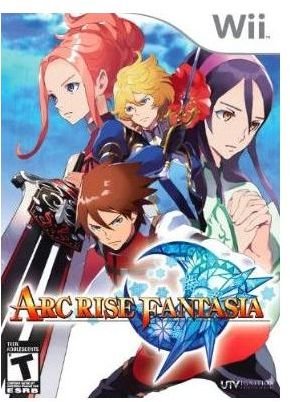
Arc Rise Fantasia is a game made in the style of traditional old-school RPGs, complete with an overworld and plenty of towns to explore, and full of NPCs to interact with. It has level and character statistic advancements and customizations through earned experience, and menu-driven turn-based combat. It adds some unique touches of its own, but for the most part, it sticks to the traditional formula. Tradition can be a good thing, of course, if done well. Some of the best RPG games of all time are built within those very same traditions. After all, these things become traditions in the first place because fans respond to them. So, for fans starved for a quality RPG experience on the Wii, does Arc Rise Fantasia qualify as a worthy entry into the Wii’s library?
Story (3 out of 5)
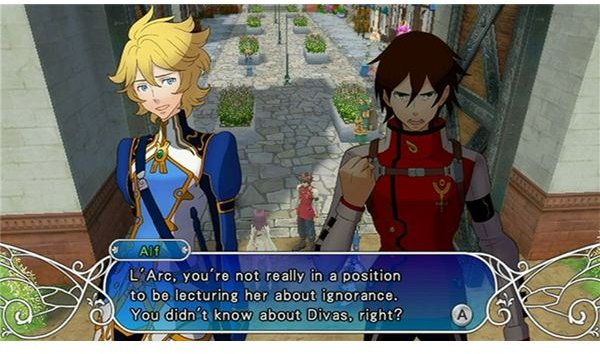
Arc Rise Fantasia follows the path of L’Arc Bright Lagoon, authorized mercenary of the Meridian Empire charged with hunting the Feldragons that threaten the peace of the Empire’s citizens. L’Arc discovers early on that he is something of a chosen one with a great destiny, and your adventure begins on that note, as you move through the world, meeting new and colorful characters at every turn that will each influence the story in their own way. The Meridian Empire that L’Arc calls home is one of a few major powers in the world of Fulheim, where the game takes place. The other two major empires, Olquina and the Turmelian Republic, are both enemies of the Meridian Empire, and the peace between the three is shaky at best. This means, as you travel the world in your adventures with L’Arc, you’ll deal with plenty of mistrust and cultural ignorance between any citizens of the three nations, even between some of the key characters. This theme of religious intolerance and segregation is a little deeper than your standard fare, and does serve to boost an otherwise mediocre storyline that’s mostly pretty generic fare and falls directly into a lot of the standard clichés of RPGs and fantasy storylines in general.
Characters (4 out of 5)
The character is Arc Rise Fantasia are genuinely entertaining and are usually quite well written throughout the storyline of the game. There are also optional “talk events” that happen from time to time and can be viewed by pressing the “2” button when prompted, and they provide additional character development by letting the characters interact with each other outside of the overall storyline. Most of the talk events are tied in some way to the main storyline, prompting you at specific points and expanding on the main story in one way or another. You can collect optional outfits to dress your characters in, however, and wearing specific combinations of outfits will trigger talk events related to them. The characters and their dialogue, especially when interacting directly with each other in the talk events, make up for a lot of the places that the overall storyline may be somewhat lacking.
Gameplay Features (5 out of 5)
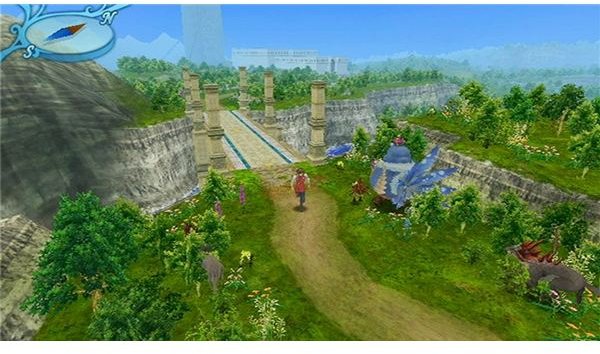
For long-time fans of the genre, a lot of the gameplay mechanics of Arc Rise Fantasia will feel like coming home. You’ll move from dungeon to dungeon, saving your game at save points spaced evenly throughout, ending each dungeon with genuinely challenging boss fights requiring you to use your abilities wisely. In between the dungeons, you’ll stop in various towns to talk to all sorts of NPCs, who will mostly serve as background decoration but who will even sometimes offer useful information or give you items. You’ll fight monsters to gain money and experience as well as items that you can use to buy or upgrade your armor and weapons for each character. You will also gain Weapon Points from combat in addition to standard Experience Points, which exist to level up your weapons specifically.
There is a world map to travel through in between the towns as well, which serves to make the game’s world feel more complete, rather than porting you from disjointed location to location, something that has sadly been phased out of most modern RPGs. In addition, there is an optional “Guild” system that allows you to accept quests to hunt certain types of monsters or to collect a specific type of item that drops from a specific monster on the world map. Completion of these quests will reward you with money and items, as well as unlocking harder quests, ultimately leading to bounty hunts of rare named monsters (essentially optional boss fights) for rare items that can’t be obtained in any other way. These allow you to engage in extra combat on the world map when necessary to increase your experience without it feeling like a dull grind, because you are still advancing other things at the same time.
There are also various menu options such as, in addition to the standard options of status for each party member, armor equipping, magic, etc., a library of how to use every control and gameplay mechanic in the game, which updates with each new tutorial you view or each new ability you gain, a menu of any guild quests you’re currently on which also shows your current progress on each quest, and a library of monster information that updates itself with every new enemy you face.
Controls (3 out of 5)
Due to the traditional style of the RPG, there is no inclusion of Wii-specific controls, which is probably a blessing in this case. Motion controls in many Wii games feel like they’ve been added out of obligation more than necessity, and as a result, they feel out of place and hamper the experience more than they help it. The Wii’s motion controls have their own limitations, and whenever they’re seemingly added as an afterthought, it’s those limitations that show through. The camera can also be rotated on the world map, and in dungeons, the camera will move with you so that running forward will allow you to do things like round corners automatically. The controls do nothing special, but they serve their purpose and never get in the way. The standard control style for Arc Rise Fantasia is using a Wii Remote and Nunchuk, but because of the basic button-based style of controls, the game can also be played with either a Classic Controller or a Gamecube Controller.
Continue the review on the next page…
Battle System (5 out of 5)
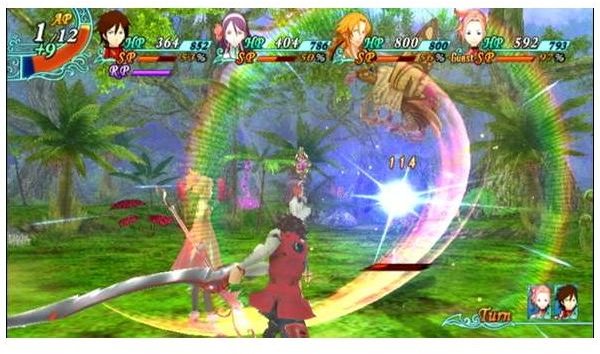
One of the traits Arc Rise Fantasia has borrowed from a lot of modern RPGs is that instead of random encounters, the enemies are visible on the map, both in dungeons and on the world map. This, for the most part, allows you to fight as much as you feel is necessary. If you think your party is strong enough and you don’t feel like getting into battles, you can attempt to run around enemies rather than running into them. This is especially nice if you find yourself getting lost in dungeons. Rather than frustrating you by tossing you into a battle sequence every few seconds, the game lets you avoid a lot of conflict while you try to find your way back. This also makes the standard “ambush” and “first attack” types of battles non-arbitrary. If you run head-to-head into an enemy, the battle screen generates in standard mode. Otherwise, the party that attacks from behind, whether you or the monster, gets an initial advantage. The battle system employed is a fairly basic turn-based style of combat reminiscent of the systems employed by some of the best RPG games ever made.
Battle Commands
In battle you can choose to attack, use magic spells or items, or you can use character-specific special attacks called excel acts. In addition, L’Arc can form bonds with monsters called Rogress which he can summon in battle, and there are certain battle commands that can be equipped to character weapons, thus allowing you to bestow them on the character of your choice once acquired. You’ll need to spend magic points to use magic spells, skill points to use excel acts, and Rogress points to summon Rogress. Skill points and Rogress Points regenerate on their own, but Magic Points must be regenerated by gaining levels or sleeping at inns, or you can use items that regenerate MP. All abilities used in battle also consume “Ability Points,” some of which regenerate at the beginning of each attack turn. You can use your abilities however you want, attacking exclusively with one character while the others stand around, spreading the ability points around your whole party, or even conserving some to carry forward to the next attack turn. As well, you can move your characters around on the field using some of your action points, and where they’re standing will affect what wide-range enemy spells might hit more than one member of your party, as well as sometimes causing your party members to perform synchronized tandem attacks automatically. The shared ability points pool, as well as the manner in which it is used, helps to add an element of strategy not always present in turn-based combat.
Upgrading and Customizability (4 out of 5)
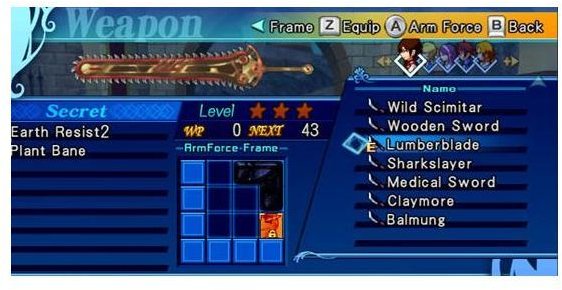
Image Epoch has done an excellent job here of providing a decent amount of customization and upgrading options, without adding so many as to overwhelm the rest of the experience. Every weapon you find has a “grid” onto which you can attach weapon pieces that provide stat boosts and extra abilities. Each weapon comes with some already attached, some of which are permanently tied to that weapon, and some of which can be unlocked as you increase the level of the weapon, by gaining Weapon Points from battles fought with that weapon equipped. Each weapon piece has a unique shape that takes up space on that Weapon’s grid, which is always four squares high by four squares wide, and unlocked weapon pieces can be attached to any weapon, on any character, so long as you can fit them into the weapon’s grid. As you start to acquire a lot of unlocked weapon pieces, you’ll find that each character’s statistics and in-combat abilities become extremely customizable, allowing you to build a party you’re happy with. There are plenty of different types of armor and accessories you can buy for your party members as well to upgrade certain statistics and tailor their strengths to the way you prefer to play. Finally, there is the Outfit system mentioned earlier in this review that serves as a fun way to customize your party and play with their relationships with each other, without actually affecting the story in any way, making it something you can spend as much or as little time on as you want, without missing out on any gameplay benefits.
Magic System
The Magic System is actually quite customizable as well. Each character has an orb that can be upgraded in workshops in every town by spending Rico, the currency in Fulheim. The Orbs have slots in them, and you equip gems of different elements into those slots to use that type of magic. You can upgrade each Orb to strengthen its abilities in different types of magic, as well as different levels of magic, and to add more slots to the Orb. You can also buy a higher maximum amount MP, or Magic Points, which are used to cast spells, at the workshops in each city.
Once you have multiple slots in an Orb, the types of Gems you equip start to be very important as well. Equipping two of the same kind of Gem in adjacent slots will allow you to use the next tier of that type of magic. So equipping two Fire Gems next to each other will allow you to use Level 2 Fire magic with that character. Conversely, equipping two of the opposite sort of Gem (For example, Fire and Water) will actually lower the tier of magic that character is capable of performing by one.
Even more than that, though, you can equip complimentary elements next to each other to unlock an all new type of magic to use. Equipping a Water Gem next to a Wind Gem, for instance, will allow you the obvious benefit of being able to use Level 1 Water Magic and Level 1 Wind Magic, but it will also add Level 1 Lightning Magic to your repertoire. This adds a little bit of strategy to the way you spread your magic out among you party members, depending on whether you want them to specialize in one type of magic or be able to do a little of everything.
Info on Graphics and Sound, and the Final Verdict is on Page 3…
Graphics (3 out of 5)
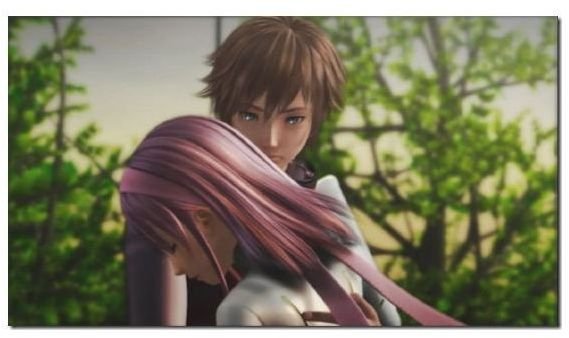
The visual and audio are definitely the low point of this game, unfortunately. The art style is great, and the game has an excellent cell-shaded anime cartoon look. That look, unfortunately, only comes through in the still images of the characters that pop up in your menus and dialogue screens, and in the game’s cutscenes. Sadly, the in-game graphics are grainy and lacking any clear detail. Graphical capability is consistently one of the Wii’s strongest downsides, but these graphics are bad even by those standards, and are honestly even outdone by more than a few Gamecube games. As well, when you equip new outfits to your characters using the previously mentioned outfit system, the outfits you equip only appear on the menu screen and in the outfit-related talk events you may trigger. Everywhere else, the game will show your characters wearing their default outfits, which is an unforturnate inconsistency, though the different weapons you equip will show up in the battle screens.
Sound (3 out of 5)
As for the audio, the soundtrack itself is good, and the music serves to compliment each scene pretty nicely. It’s not often terribly memorable, however, and once the game is off, you’re probably not going to have an overwhelming desire to listen to the soundtrack. The sound effects are pretty basic and generic as well, which, once again, does well enough to get the job done, but will never be especially impressive. The game’s cutscenes are all voiced, and some of the story-driven dialogue scenes, as well as most of the combat tutorials, are voiced as well. The voice acting, for the most part, is relatively sub-par. The main characters are generally passable, though you’ll likely never find their acting particularly moving. The real problem lies with the minor characters. Those characters that have only a handful of voiced lines are at best unimpressive and forgettable, and often are bad enough to be irritating. Overall, it’s not enough to ruin the experience, but the game’s performance definitely falls short here, which is a shame in a game that is otherwise well above average in every aspect.
Overall Verdict (4 out of 5)
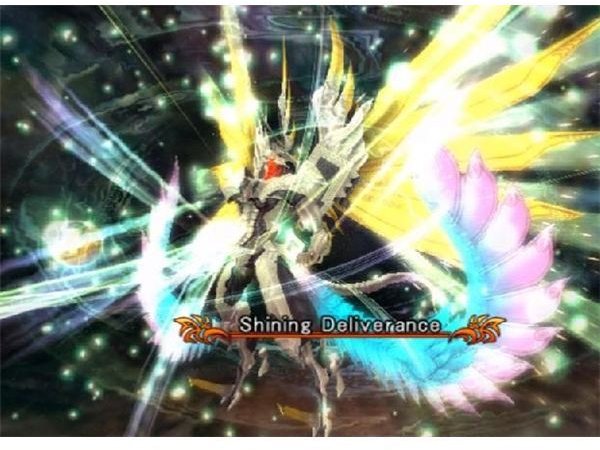
The Nintendo Wii is a system with an overwhelming deficit in the RPG category. There have been a few good games action RPGs released for the system, but fully role playing gaming experiences are exceptionally poorly represented. As a result, any RPG released finds a spot among the best RPG games for the Wii almost by default. Arc Rise Fantasia, however, is an RPG that genuinely is extremely good. It has a decent, albeit generic storyline, with entertaining characters. It has excellent gameplay mechanics and a great combat system that stays traditional but makes unique changes in just the right places. It has a great menu system with a fair amount of customization that’s very easy to understand and simple to manage without ever overtaking the rest of the game experience. The graphics and the audio leave something to be desired, but they’re not enough of a problem to be a major detractor. It’s not a perfect game, but it’s an excellent RPG, and honestly deserves a place among the best RPGs out right now for any system, Nintendo Wii or otherwise.
For those RPG fans with only a Wii at home, this game is an answer to their prayers. It is easily the best RPG on the system, and for those fans of old-school, traditional RPGs, it is among the best RPGs released in a while, and probably among some of the best games of any genre released recently.
If you’ve been looking for a new RPG to play and you’re a fan of the old-school Japanese RPGs, this is a game you absolutely need to own. It’s currently available for only $22.44 from Amazon. At such a reasonable price, this is an absolute must to add to your collection.
